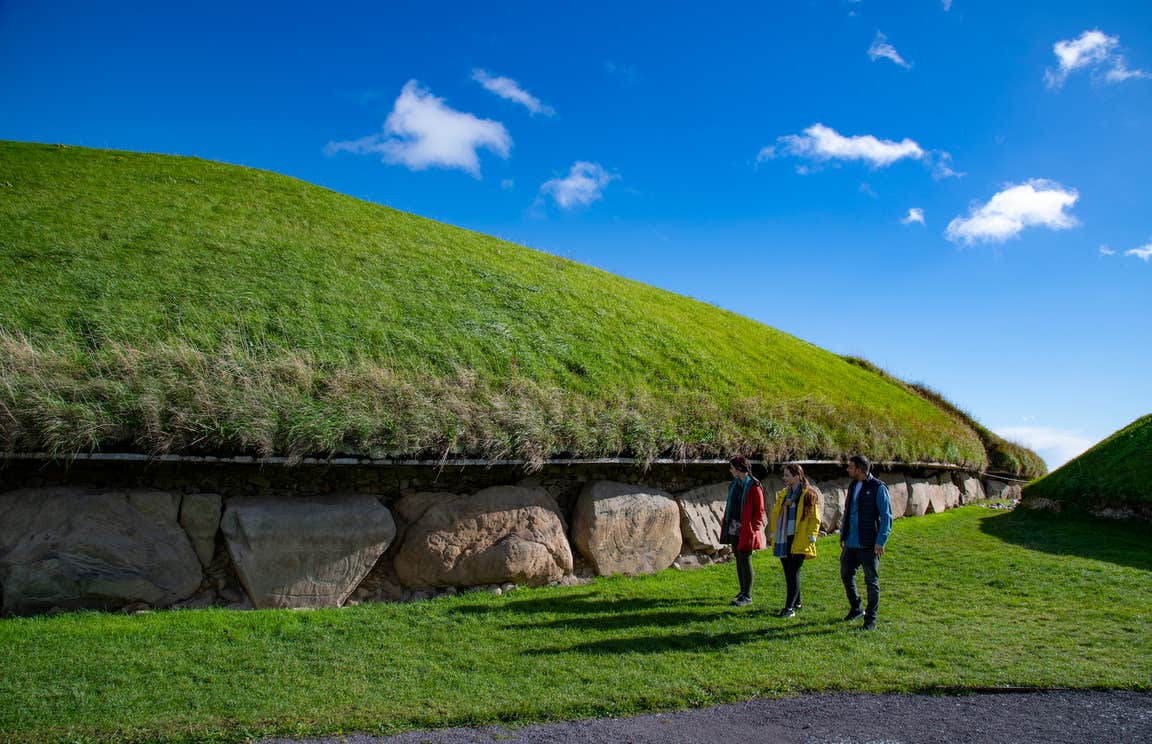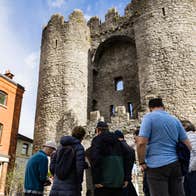Photo credit: @live.adventure.travel
Travel back in time at Brú na Bóinne
Before you catch the bus out of Drogheda, get a spot of breakfast in town to keep you going (you’re travelling 5,000 years back in time, after all). The Moorland Café is an old school bakery where you can get anything from a full Irish to a bagel, along with some kind of bun slathered in icing for breakfast dessert. The Copper Kettle has a huge breakfast menu with four different size options for a full Irish, and Leyland Café is just a four-minute walk from the bus station (though it opens a little later some days, so think brunch rather than breakfast). (Leyland Café is currently closed for renovations and is scheduled to reopen in summer 2025). If you’re catching the first bus of the day and are pushed for time, get a coffee and pastry for the journey from Ariosa – they open at 8am.
When you’re fed and watered, make your way over to the bus. The Local Link 163 bus goes from Drogheda to Brú na Bóinne (40 minutes, three times daily) and departs from both the train station and the Spar opposite the bus station. It’s a very punctual service and can even leave a few minutes early, so get to the stop about five minutes before departure time, just to be on the safe side.
It’s a scenic drive out to Brú na Bóinne – sit on the left side of the bus for the best views out over the hills of the Boyne Valley. When you arrive, take note of where the bus driver drops you off, as this is where they’ll pick you up – and tell them what return service you’ll be catching, too.
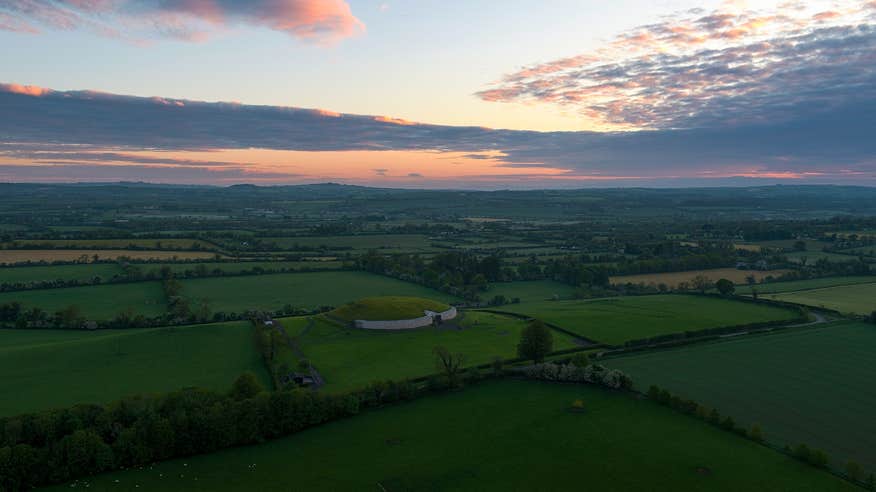
From the car park, it’s a pleasant five-minute stroll down to the visitor centre, and you can take a brief detour along the way on the River View Path, where there’s a viewing platform and information point overlooking the Boyne, as well as a giant picture frame for photo opps.
You’ll need to book your tickets in advance for your Brú na Bóinne experience, as tours usually sell out. There are several slots each day at slightly varying times, but the best tour to book is at 10am, which is perfectly timed with the first bus of the day. Bear in mind that the ticket time includes 45 minutes in the exhibition space at the visitor centre before your shuttle bus departs for your tour to the passage tombs, so a 10am ticket really means your bus leaves at 10.45am (on the dot).

There are a few different tour options, but the most popular is the is Brú na Bóinne Tour and Newgrange Chamber, which also includes Knowth (though the latter closes between November and February). All the tours include a shuttle bus transfer to the sites, which departs from the other side of the river – all the buses are 100% electric, too. It’s a lovely walk to the stop, which takes you on a suspension bridge over the River Boyne (have a little bounce in the middle if you’re feeling brave).
Visiting Knowth
Knowth is the first port of call – it’s not quite as ancient as Newgrange, but still over 5,000 years old. And it’s an impressive sight, the main passage tomb surrounded by 18 satellite mounds, all covered in bright green grass.
Newgrange might steal the spotlight but even though you can’t go inside Knowth, it’s every bit as interesting – and there’s more to see from the outside, too. Walk around the outside of the tomb and you can see the collection of megalithic art carved into the huge stone slabs, as water drips down from the moss and grass that makes up the tomb’s roof.
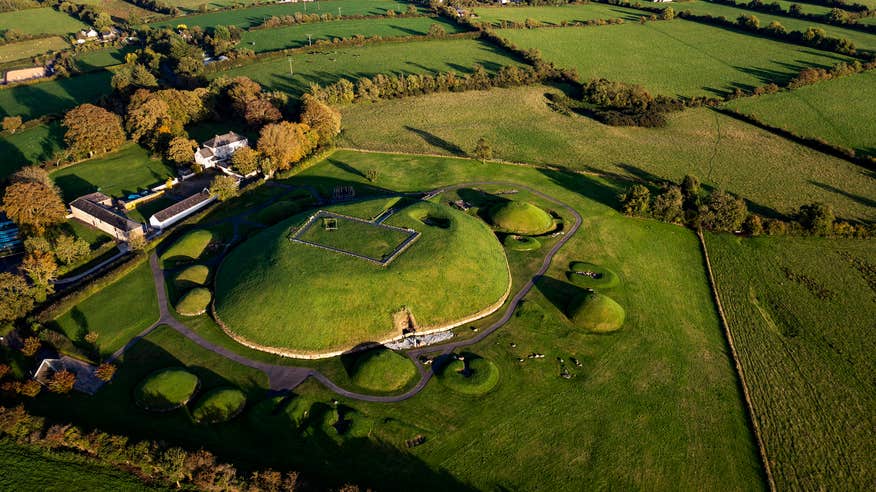
Your tour guide takes you around the perimeter of the main passage tomb, pointing out specific ancient carvings on the boulders – one of the most interesting is the rock with 29 depictions of the lunar cycle and a serpentine figure portraying the lunar months. Effectively, it’s a 5000-year-old calendar – take that, iPhones.
And while you can’t enter the tomb, you can walk on top of it, by climbing the steep steps that cut through one side of the mound and give it a distinctly UFO vibe. At the top, you get a great view of the surrounding countryside, and those with an eagle eye will be able to spot Newgrange, as well as the Hill of Slane in the distance.
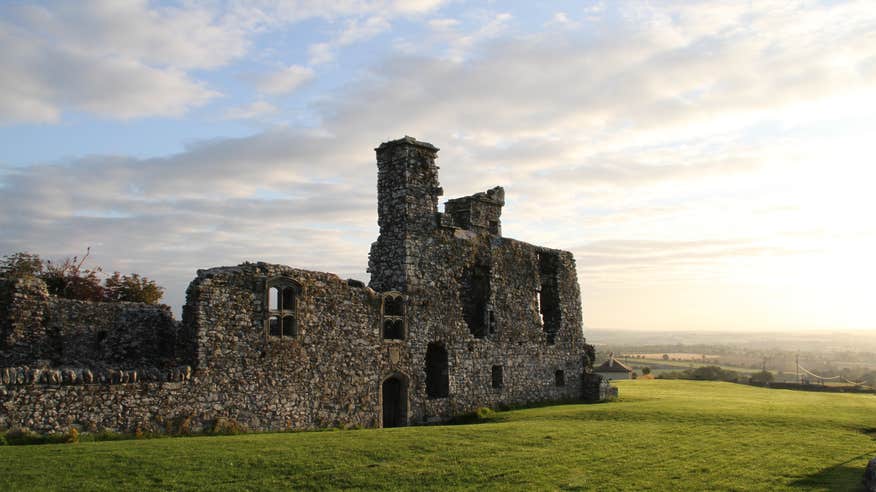
You have about 20 minutes or so to wander around on your own, or you can head to the OPW building in the adjoining courtyard to watch a film all about the discovery of Knowth, which is worth it for the aerial footage alone.
Experience Newgrange
For the transfer to Newgrange, try to sit on the left-hand side of the shuttle bus and keep an eye on the farmer’s field just opposite Newgrange. There’s another passage tomb right in the middle of it, protected by a circle of trees. The area is full of neolithic tombs, many of which are out of sight – after all, it was only in 2018 that archaeologists discovered another passage tomb half the size of Newgrange at Dowth Hall.
Even if you’ve seen it before, the sight of Newgrange is striking. The white quartz that makes up the wall was transported all the way from the Wicklow Mountains and gives the tomb its distinctive gleam. For a passage tomb constructed in 3200 BC, it’s looking rather well.
When you arrive, the group is divided and you’ll either have a few minutes to walk around outside, or you’ll head straight into the passage tomb. Usually around ten people go in at a time but be warned – the tunnel is tight and narrow in places. You scoot through the passageway, lined with thick slabs of stone, before you emerge in the centre of the tomb.
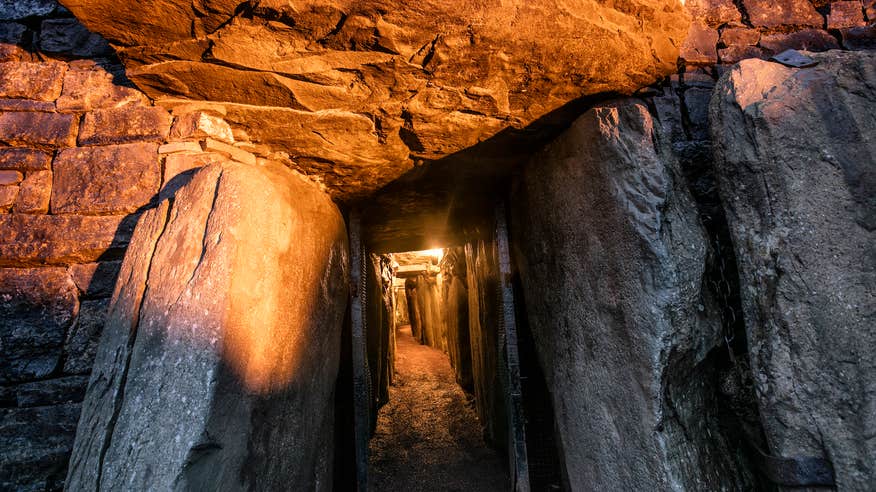
As you stand in the small, hushed space, the tour guide switches off the light to allow for a simulation of the winter solstice sunrise experience. In the darkness, a thin line of amber light appears in the tunnel, just as it would on December 21 if the sun is visible in the sky. Tickets for the actual solstice event are pretty tough to get (the lottery usually gets around 30,000 entries), but this simulation is nevertheless pretty impressive.
Check out the exhibitions
Often at sites like this you want to rush through the exhibitions to get to the main event. But at Brú na Bóinne, the extensive exhibition space is well-worth exploring in more depth. Your ticket time allows for 45 minutes at the start of your visit, but you could easily spend more than an hour walking through the installations, so allow some time here before you head back to Drogheda.
The exhibition features a fascinating lesson in the construction of the passage tombs as well as focus on the discovery of the roof box (the window above the entrance) at Newgrange in 1961. There’s also two excellent videos about new DNA analysis and the 2018 discoveries – both offer an interesting insight into the modern science behind the ancient treasures.
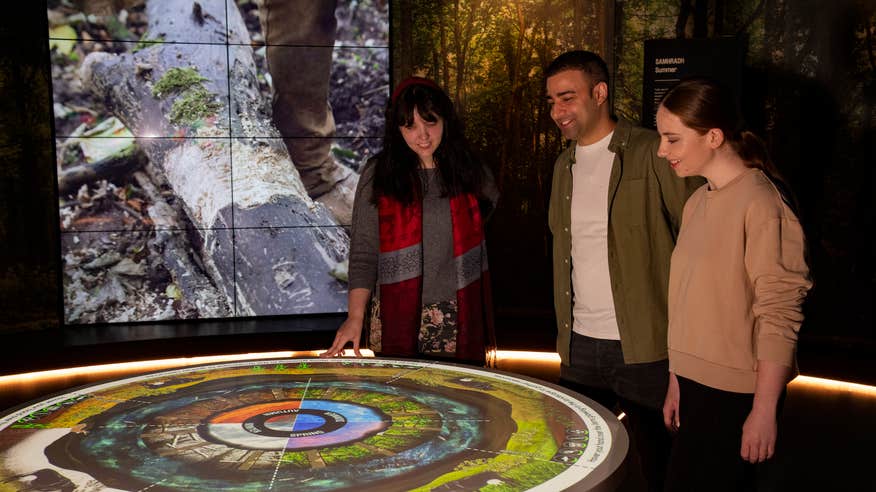
The video installation room is a highlight, where you walk through an immersive space of changing forest scenes, complete with silhouetted deer and wild boar wandering into shot. On the main screens, you’ll get an overview of Newgrange, Knowth and Dowth, before moving into rooms dedicated to the story of Neolithic ceremonies and the importance of the seasons.
The finale is a replica of the winter solstice event in Newgrange; as you walk through the (slightly larger than the original) tunnel, you’ll hear voices of people witnessing the sight at solstice itself, as well as more poetic descriptions of what it means today and what it might have meant thousands of years ago.
When you’re ready, head back to catch the return bus to Drogheda. The last service is mid-afternoon, so you’ll have a bit of time to explore back in town. Get off at the bus station and make your way down to St Dominic's Park and the start of the Boyne Greenway. In its entirety, it would take you all the way to the Battle of the Boyne site, but you can also just walk a little stretch of it then turn back towards the city whenever you please. You’ll stroll along the edge of the Boyne, past the street art under the Bridge of Peace and out towards the golden reeds and rushes as the river widens out.

Where to eat at Brú na Bóinne
There’s a large café in the visitor centre where you can grab a bite to eat, whether you’re in the mood for some coffee and a chocolate éclair or something more filling, like a homemade sausage roll or a cottage pie made with Boyne Valley beef. If you have a bit of time to kill before your return bus, it’s a lovely and light-filled space to wait with a cup of tea.
Extend your car-free trip by a day and spend some time exploring Drogheda and the Battle of the Boyne.
